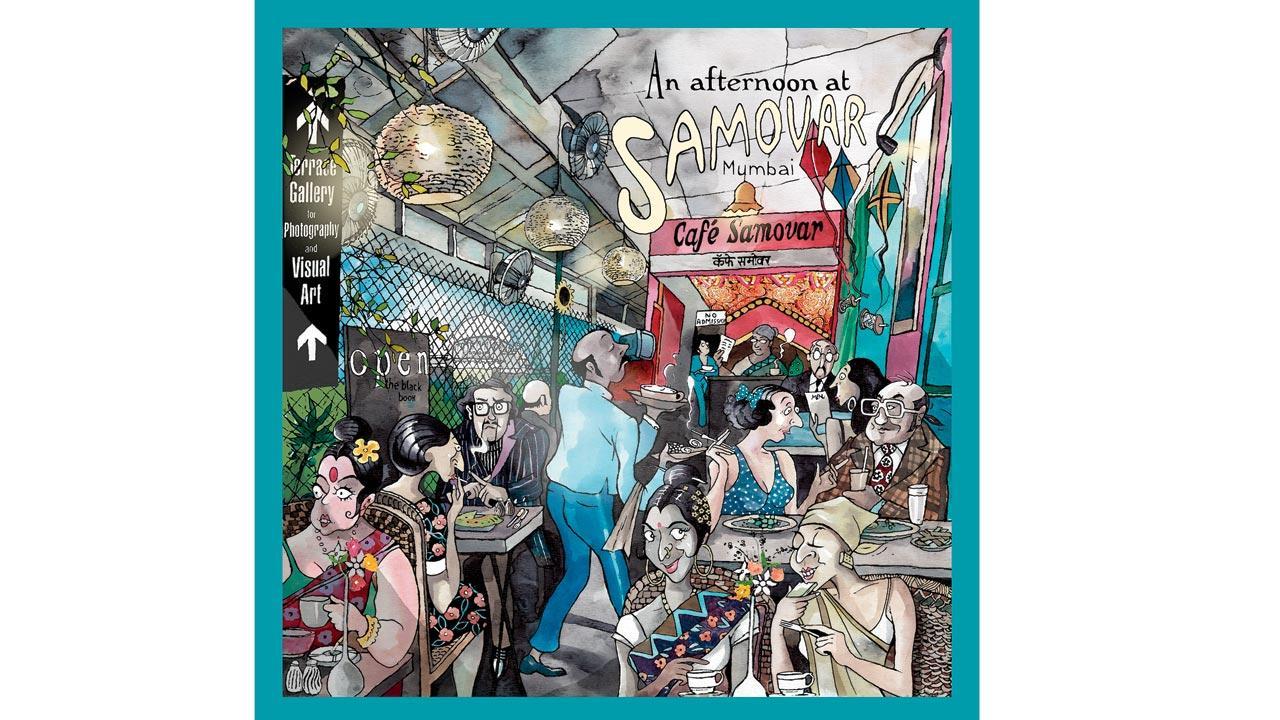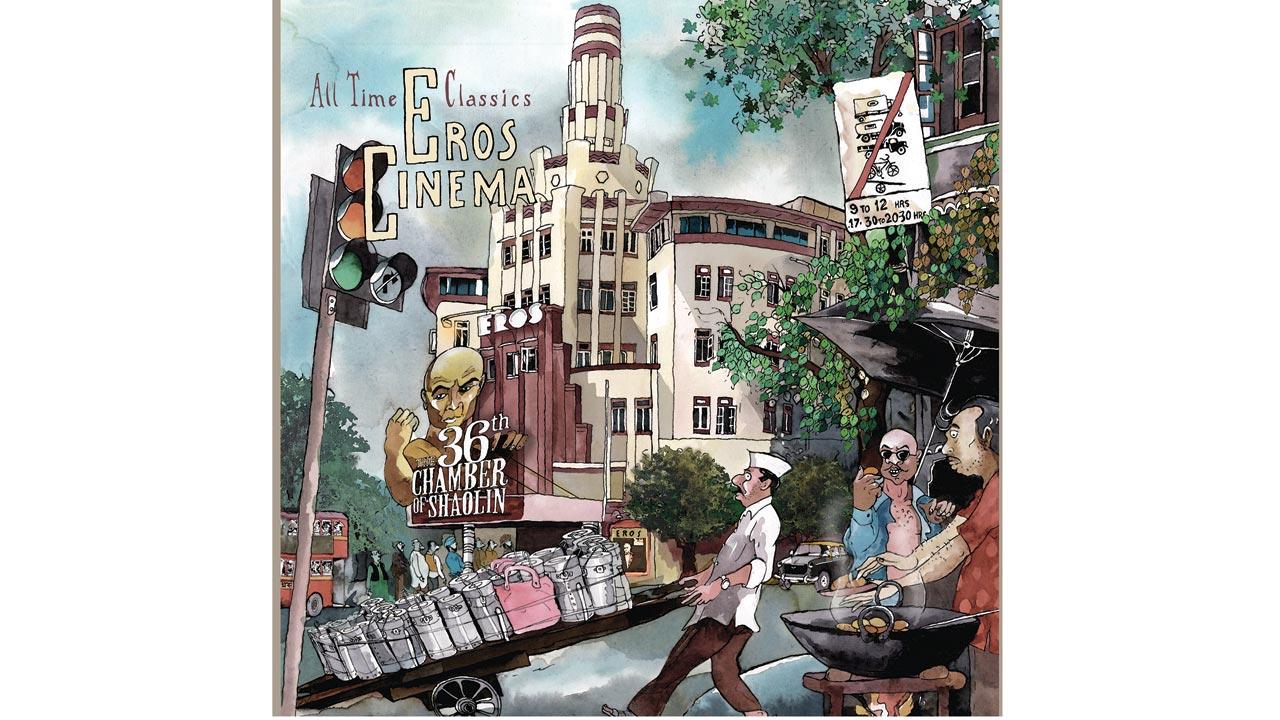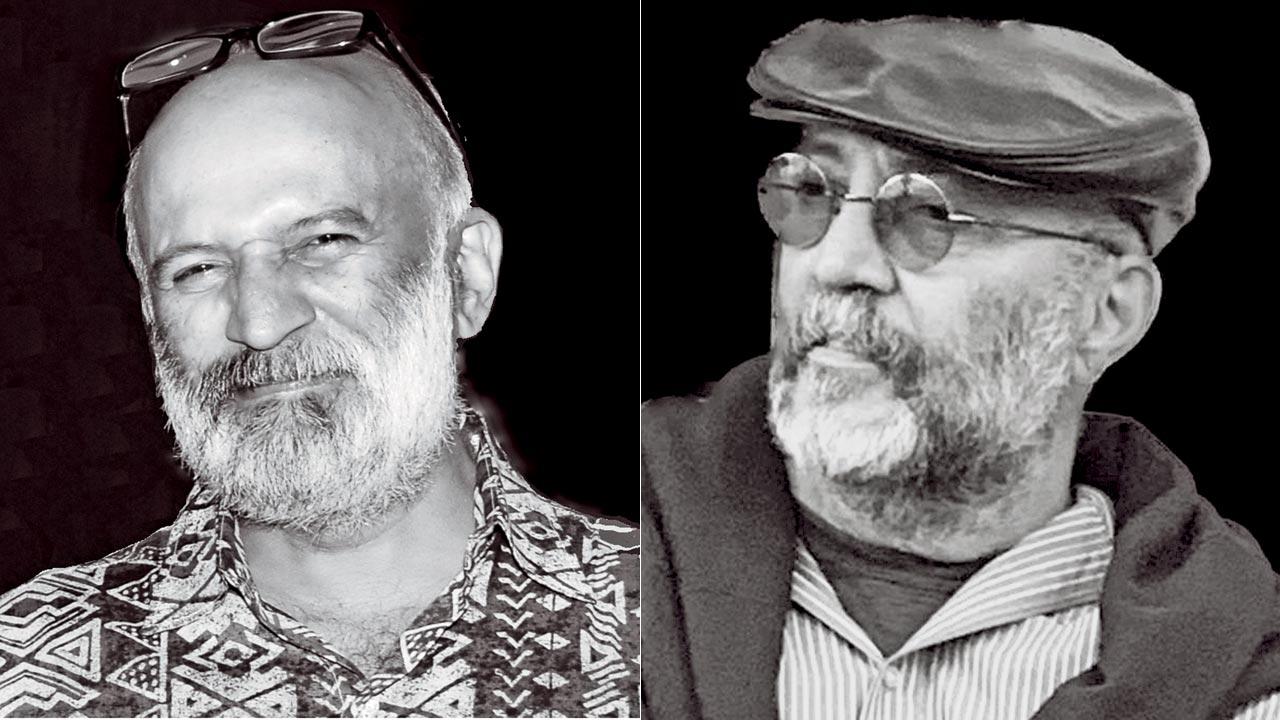An aspiring actress, the head waiter at Samovar, a cashier at Jagdamba Tiffin House, and many other unique characters make up the cast of a new illustrated book that traces BEST’s “11 Limited” bus route from Colaba to Bandra

The book also pays homage to legendary Mumbai spots that are now lost to time, such as Samovar Cafe. Illustration/Paul Fernandes
Do you ever catch yourself waiting at the bus stop, wondering about the other people standing in the queue? Like, perhaps, the gentleman ahead of you holding a bouquet of flowers—where is he headed, whom are the flowers for? Or the dabbawala at the train station: is there a beloved waiting for him at the end of a long day, someone who packs his dabba with love?
It’s these fleeting moments that are brought to life by the illustrator-writer duo, Paul Fernandes and Rahul Mehrotra, in their new book, 11 Limited. In a series of illustrated short stories set along the 11 Limited bus route between Colaba and Bandra East, Fernandes and Mehrotra imagine the lives of the myriad of characters we might come across during our daily commute, who call this city home.
“Whenever I visit Mumbai, I find that taking the bus is the best way to see the city,” says the Bengaluru-based Fernandes, who swings by Mumbai often. “By and by, I discovered this bus route, which starts at one end of Colaba and goes all the way to Bandra. It takes a long and tortuous route, and every stop has different people and communities you get to meet. These are the people you see every day in this beautiful, crowded city,” adds the cartoonist.
 The short stories are set along the bus route from Colaba to Bandra, and feature many characters that are ubiquitous to Mumbai, such as this dabbawala and his buddies—a vada pav vendor and a black market ticket seller at Eros Cinema near Churchgate. Illustration/Paul Fernandes
The short stories are set along the bus route from Colaba to Bandra, and feature many characters that are ubiquitous to Mumbai, such as this dabbawala and his buddies—a vada pav vendor and a black market ticket seller at Eros Cinema near Churchgate. Illustration/Paul Fernandes
The stories are short and filled with whimsy, whether it’s the tale of a dabbawala shooting his shot with his crush, or a standoff between an old-fashioned traffic policeman and three women determined to get their way.
The slice-of-life tales also feature some characters that have disappeared from the city, like the Polaroid photo sellers that used to haunt popular spots such as the Gateway, offering to freeze picnicking tourists’ memories of their day out in an instant picture. Illustrations of the legendary Samovar Cafe and Rhythm House—both now lost to time—feel like gut punches. In more than one way, the book feels like a love letter to the city and the people who live in it, even as it all keeps changing.
 Paul Fernandes and Rahul Mehrotra
Paul Fernandes and Rahul Mehrotra
“It’s difficult to not love Mumbai,” says Mehrotra, who splits his time between his homes in California and Bandra, “The energy, the people, the resilience, the humour and humanity that one sees—how can you not love it?”
“I feel that twinge, too, you know, accepting the changes I see every time I go back to Bombay,” adds Fernandes, “One of the reasons for recalling these old haunts or landmarks is to provide that bit of happy nostalgia.”
Mehrotra’s connection to the city is as old as his friendship with Fernandes—it goes back 40 years, when they worked at an ad agency here. “I used to commute on the local train from Mahim to Churchgate. In those days, the last train left Churchgate at midnight, and I would frequently miss that train,” chuckles the author, who has returned to creative writing after retiring from a career in the semiconductor industry in the US.
He agrees that much has changed in the city, but adds that there’s still plenty that’s stayed the same. “Last year, I visited Mumbai with Paul and we walked through some of our old haunts. The tree in front of our favourite Irani restaurant may be gone, but the restaurant is still there. The synagogue now has an armoured vehicle in front of it, but it too is still there. Bombay is still there, but you have to get out of your SUV and walk to see it,” he adds.
 Subscribe today by clicking the link and stay updated with the latest news!" Click here!
Subscribe today by clicking the link and stay updated with the latest news!" Click here!








